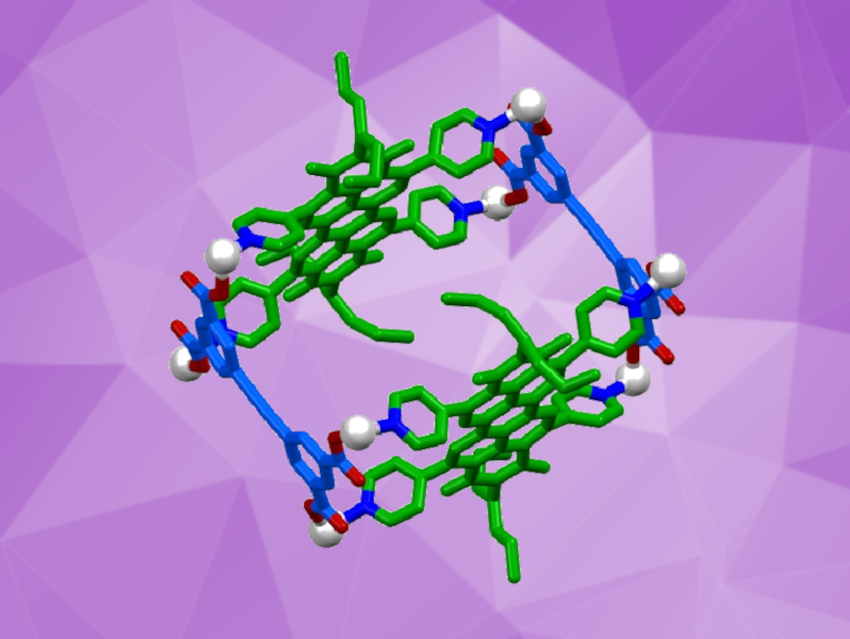Natural transmembrane transporters can precisely control the exchange of molecules between the inside and the outside of cells. Inspired by Nature, synthetic transmembrane transporters have been developed. These transporters can be employed in both industrial and biomedical applications, such as seawater desalination or drug delivery. Single-molecular artificial transporters, whose structures and functionalities can be precisely modulated, are useful in this context—e.g., metal–organic cages (MOCs) with designable open cavities.
Haishen Yang, Shanghai University of Electric Power, China, Yali Hou, Xi’an Jiaotong University, China, Jian Zhang, Wenzhou University, China, and colleagues have synthesized a well-defined perylene diimide (PDI)-based metal-organic cage (called MOC4c) and found that it can serve as an efficient transmembrane transporter for ions and small molecules through the internal cavity of the cage. MOC4c was synthesized from readily accessible precursors: a tetrapyridyl-PDI, a tetracarboxylic ligand, and cis-Pt(PEt3)2(OTf)2. In the resulting MOC4c cage (pictured), two tetrapyridyl-PDI molecules are arranged parallel to each other, connected by two tetracarboxylic ligands and eight Pt atoms.
The team then investigated the transporter activities of MOC4c. The cage can selectively transport different anions, with the transport activity decreasing in the order NO3–>Br–>Cl->SO42–. This transport activity of anions is related to hydration: Higher transport performance was observed from the weakly hydrated NO3−, Br−, and Cl−, and the lowest was found for the strongly hydrated SO42−. When coronene was encapsulated inside the MOC4c, the researchers observed inactivation of the transporter properties of MOC4c, which indicates that the ions are transported through the cavity of the cage.
- Transmembrane Transporter Constructed from Platinum Metal–Organic Cage,
Xinyu Hu, Bangkun Yue, Chen Chen, Wei Zong, Sisi Li, Haishen Yang, Yali Hou, Jian Zhang,
ChemPlusChem 2023.
https://doi.org/10.1002/cplu.202300426




